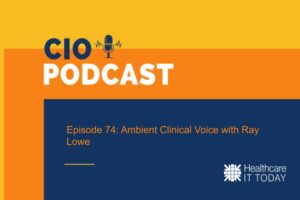The following is a guest article by Justin Williams, CEO of Noteworth, a first-of-its-kind Digital Healthcare platform for modernizing Digital Medicine delivery operations.
 Digital medicine allows patients in rural and remote locations to receive much higher levels of medical attention
Digital medicine allows patients in rural and remote locations to receive much higher levels of medical attention
As the coronavirus pandemic continues to spread into rural parts of America, it is highlighting the urgent need for healthcare professionals to have access to a variety of patient management options when in person appointments are not feasible. Despite more than a century of urbanization, there is still a significant rural population that needs medical attention as much as their urban counterparts. But for them, a full-service hospital or clinic may be many hours away. Their choices for care are rather limited. For patients living in rural parts of the country, digital medicine would be an ideal solution.
It’s a complicated issue because what might work well in one rural area might not work at all in others. For example, not everyone has access to the internet or the equipment required to connect with it. One of the biggest challenges rural healthcare organizations face is patients having access to affordable broadband required to support telehealth programs which is vital to helping increase access to and the quality of healthcare in these areas. Many rural communities do not currently have access to internet connection speeds which support the effective and efficient transmission of data to provide telehealth services. This is an issue that will need to be addressed by healthcare organizations and governments alike. According to the FCC, there are approximately 19 million Americans who still lack access to fixed broadband service at threshold speeds. That is a huge number of people losing out on having access to their healthcare providers, especially during these challenging times.
Recent studies published in Health Affairs show a growing disparity between rural health and urban health outcomes. The study found that a lack of specialty-care access accounts for 55 percent of what could be a preventable hospitalization or mortality in rural settings. The lack of access to healthcare in rural areas also host a higher percentage of deaths from things like cancer, heart disease, stroke, and chronic lower respiratory disease. These same areas account for an estimated 6.5 million individuals suffering from mental health conditions. As Covid cases continue to rise in rural areas, a new report found that one in five Covid-19 patients develop mental illness within 90 days of recovery. This is especially troubling for those living in rural areas who already have a harder time getting access to mental health services. The report found that those who’ve had Covid-19 are likely to develop anxiety, depression, and insomnia, but can also develop post-traumatic stress disorder.
The issue of mental health is becoming a challenge to address in these areas. The digital medicine platforms available today will be able to help residents of rural areas stay connected to their physicians in ways that were not available before.
Virtual visits spurred on by the coronavirus, combined with Bluetooth enabled monitoring devices wirelessly sending data to a physician’s office, can provide remarkable visibility into a patient’s health. Remote patient monitoring enables non-episodic care allowing proactive intervention that can positively impact patient outcomes.
In 2021, we can expect to see more healthcare clinicians utilizing platforms to receive, combine, and interpret patient’s data. These platforms are becoming more available to support patients and their healthcare teams, most of which have capabilities well beyond those of consumer apps. They come from multiple suppliers and each works a little differently. For example, among the professional remote care capabilities are the capacity to provide patient education, schedule appointments, issue reminders, complete forms, manage medication and participate in video visits with the virtual care team.
The future is looking better for rural America. A Pew Research study found that 71 percent of rural residents own smartphones that could enable them to log on to a telehealth platform via an app on a mobile network. As a growing number of rural healthcare organizations embrace digital medicine, now is the time to consider what is needed to make sure residents and physicians in these rural communities have the tools needed to improve quality and elevate care.
What all of it means for residents of isolated communities is that digital medicine, enabled by remote patient monitoring and chronic care management, can offer them a level of healthcare never before available. The combination of closely following patients’ health including in-person visits, virtual visits and remote monitoring even if separated by hundreds of miles is a disruptive change to the world of medicine, but it’s one that physicians are starting to feel increasingly comfortable with.













